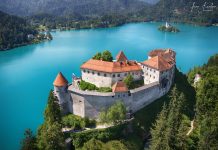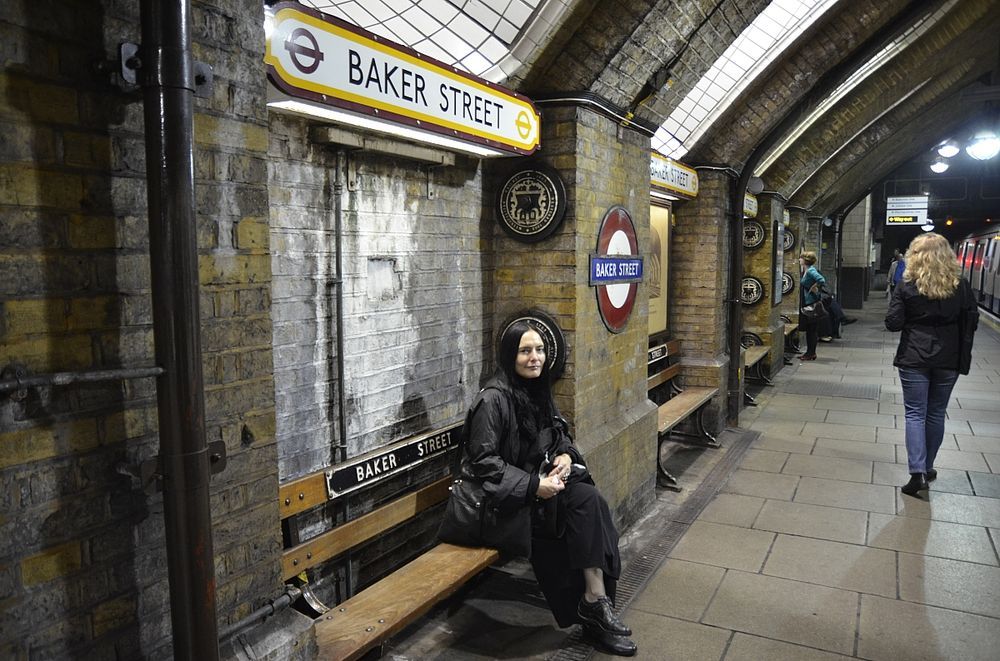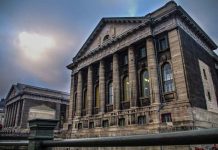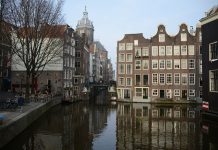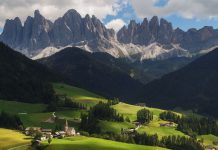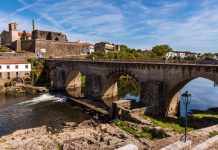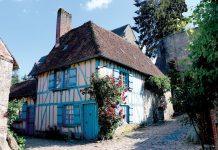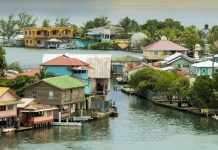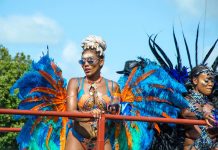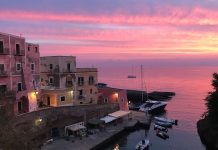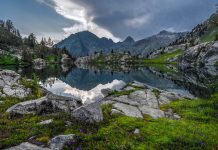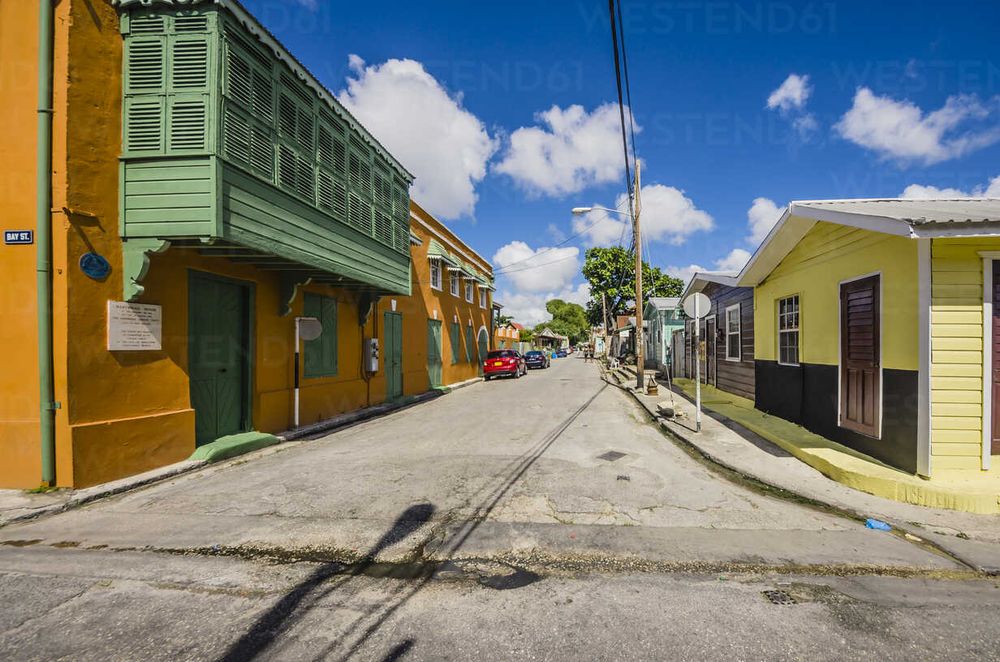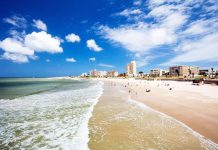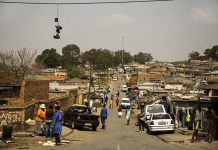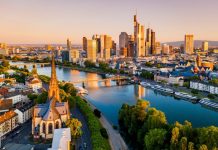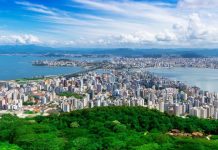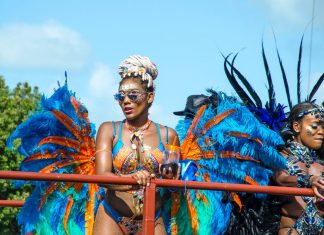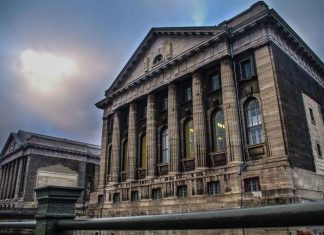Barbados is a gorgeous tropical paradise set far away from most other Caribbean islands. It is nearly 1000 miles east of the Netherlands Antilles chain. In 1536, during a quest for fresh water, the Portuguese “discovered” Barbados. They gave the island its current name, which translates to “the bearded ones.” This name was derived from their observation of local fig trees that have roots resembling thick beards. Despite the Spanish name, there is virtually no Spanish influence that remains.
The British landed a century later, and ruled the island until 1966. It was at that time when Barbados claimed its independence. The English culture, however, is alive and well, and this can be observed by the sport of choice on Barbados. Cricket is the featured game, and, in per capita terms, there are more Barbados born world-class cricket players than any other country in the world.
The capital, Bridgetown, is a marvelous city full of bustling activity and breathtaking surroundings. The island itself is 21 miles long and 14 miles wide. Barbados is quite flat, and the highest point is Mount Hillaby at 1,115 feet. Sugarcane is the crop that has sustained Barbados for decades. The valleys and hills are blanketed by acres of this sweet plant. The people in the city of Bridgetown are especially friendly and hospitable, and they had better be, because tourism is the island’s most profitable industry. Unlike some of the other Caribbean islands, the government of Barbados is stable and the business community sophisticated. The population is 260,000, and a great number of them live in or around Bridgetown. The perimeter of Barbados is gorgeous white-sand beach, and the interior is comprised of exquisite rolling hills and flat grasslands.
All of the facilities on Barbados, and particularly in Bridgetown, are fabulous. The city of Bridgetown and all of the luxurious west coast has been named the Platinum Coast by British vacationers. Fine dining, scuba diving, sea excursions, and festivals are only the beginning of the fabulous activities of Barbados. Museums and archaeological sights highlight the rich heritage of the island, and so many of the locations combine education and entertainment. The miles of exquisite beach offer every water sport imaginable, and Barbados has a terrifically active nightlife. A combination of European and strictly Caribbean influences create a diverse and fascinating ambiance everywhere you go.
Cruise ships dock at the Deep Water Harbour, just north of Brighton Beach and minutes from the epicenter of Bridgetown. Upon arrival, you can take a stroll to the vast and beautiful Brighton Beach for a relaxing swim. As the ship pulls in to the glorious west coast, your eyes will gaze upon the sparkling water splashing the marvelous sandy beaches. A sense of renewed life envelops the shore bound traveler as you notice the lovely mahogany trees swaying in the light Caribbean breeze.Local Transportation in BridgetownTaxis are a great choice for transportation in Bridgetown and all around Barbados because they are on a fixed rate set by the government. Up to five passengers can ride in a taxi at no additional charge. Paramount Taxi Service (246/429-3718) is the best company in Bridgetown. Taxis are everywhere and easily spotted, look for the “Z” on their license plates. Lyndhurst Taxi Service is another quality outfit (246/436-2639). From Bridgetown out to many of the island’s most popular destinations will typically cost around $15.The bus system in Barbados is quite reliable and punctual. The buses leaving from Bridgetown will take you anywhere on the island. The blue and yellow buses are nationally owned and the destinations are posted on the front. The fare is only $.75, but exact change is required. Departures from Bridgetown leave from Fairchild Street or Princess Alice Highway. For schedules and information, call the Barbados Tourist Board (246/427-2623).
Barbados’ main city, Bridgetown, is within walking distance (about a 15 minute stroll). Taxis are just outside the port terminal; signs to the taxi stand are plentiful. Sunset Crest Car Rental, located just outside the port terminal, offers daily rentals starting at $75; no reservations required. If woul you like to Hiring a driver and want a custom tour -without having to do the driving? On a recent half-day port visit to Bridgetown, William Drayton, owner of Drayton Transport Management (246-428-6831, 246-230-5800) gave us a fantastic tour, from a foray to the off-the-beaten-track north coast to accompanying us around Bridgetown on foot. Reservations are required in advance; cost is $30 per hour, per car.
| Attractions |
Bridgetown is a city exploding with life and personality. There is always something to do, and always somewhere to go where you are sure to enjoy yourself.
Harrison’s Cave:
The underground world here, the number-one tourist attraction of Barbados, is viewed from aboard an electric tram and trailer. You’ll see bubbling streams, tumbling cascades, and subtly lit deep pools, while all around stalactites hang overhead like icicles, and stalagmites rise from the floor. Visitors may disembark and get a closer look at this natural phenomenon at the Rotunda Room and the Cascade Pool. Although it’s interesting, it may not impress those who have been to the far more spectacular Carlsbad or Luray Caverns.
Holetown:
It’s the oldest town in Barbados, but you’d hardly know it from its modern appearance. Founded in the 1620s, Holetown is now a major cog in the island’s tourism machine. You can absorb some of the town’s history at St James Church, a 19th-century structure that still has traces of its 17th-century past, including a bell inscribed with the name of King William. Folkestone Park fronts a narrow beach where you can picnic, snorkel (there’s a sunken barge nearby) when the water is calm or surf when the waves are up. There’s a marine museum in the park with exhibits on fishing and boat building.
Sam Lord’s Castle:
This limestone coral mansion has an interesting, albeit embellished, history. The mansion was constructed by Sam Lord who, according to legend, hung ‘wrecker’ lanterns off the point to lure ships onto Cobbler’s Reef. The ships thought they were entering a safe harbour, and when they crashed on the reef Lord purportedly went down to collect the cargo.Although there’s little doubt that Lord was a scoundrel, most historians discount the lantern story as folklore. Lord’s former home looks like a stately residence rather than a castle and contains a modest collection of paintings and antique furnishings.
St Lawrence:
Along the southwestern coast there’s a cluster of small, low-key towns with excellent beaches that provide much of the island’s low to mid-range accommodations. St Lawrence, about 15km (9mi) southeast of Bridgetown, is the liveliest, offering plenty of opportunities to boogie down or fill up on flying fish. Dover Beach, the town strand, has powdery white sand. A few minutes’ walk west along the beach at low tide brings you to the towns of Worthing and Hastings, which have interesting local crafts and lovely white-sand beaches.
Barbados Wildlife Reserve:
A project of the non-profit Barbados Primate Research Center, this reserve is a walk-through zoo that features a colourful array of green monkeys, red-footed turtles, caimans, brocket deer, iguanas and agoutis. The monkeys are the main attraction so make sure you are there to see them being fed in the afternoon.
Flower Forest:
About 20km (12mi) northeast of the capital sits the Flower Forest, 20ha (50 acres) of tropical flora and meandering paths on a former sugar estate where you can learn the name of virtually every plant on Barbados. The garden has sweeping views of the Chalky Mountains and the Atlantic Ocean. A few kilometers south of the Flower Forest is Welchman’s Hall Gully, where a trail winds through the island’s only remaining rainforest. Nearby Harrison’s Cave is a fascinating network of limestone caverns with stalactites and stalagmites, subterranean streams, pools and waterfalls. A battery-powered tram enters the cave, stopping en route to let passengers examine the more impressive sites, such as the huge domed cavern known as the Great Hall.
Sunbury Plantation House:
This atmospheric 17th-century plantation house is the only one on Barbados that can be explored in its entirety. The house has thick stone walls built of local coral blocks and ballast stones from the English sailing ships that picked up shipments of Barbadian sugar.The interior retains its colonial ambience and is furnished with antiques, many made from Barbadian mahogany. The articulate guides are well-versed in local history, making this the finest plantation tour on the island. Buses from Oistins stop at the house gates.
The western coast of Barbados:
The western coast has reef dives with soft corals, gorgonians and colorful sponges. There are about a dozen accessible shipwrecks, some – such as the Berwyn in Carlisle Bay – lie at good snorkeling depths. The island has excellent windsurfing conditions from November to June at Maxwell and Silver Sands, and good surfing at the Soup Bowl, South Point and Rockley Beach.The Barbados National Trust leads weekly guided hikes in the countryside on local history, geology, flora and fauna. You can also arrange horseback riding along the beach at Mullins Bay.
The Barbados Museum:
Located at the Garrison (246/427-0207), is a fascinating place to catch up on the history and culture of Barbados and Bridgetown. This was a military prison, used to house criminals and prisoners of war. The museum also features an exhibit, which shows the island’s progression from prehistoric to modern times. Barbados has an extremely strong natural environment, evidenced by a showcase of indigenous spices and resources on the island.
The West Indian Arts and Heritage Exposition:
Indian Arts and Heritage is presented here at the museum as well. Items including handcrafts and periodicals can be purchased at the quaint store inside the museum. At the café, you can find a quality snack or a light lunch. Admission is $6 for adults and $3 for children.
The Barbados Gallery of Art:
(246/228-0149) features the best Caribbean and Bajan visual art. A stunning array of paintings and original work, this is another great place to cool off and soak in the culture of the island. A fabulous garden exists in the outside portion of the gallery as well. There are a couple of non-active, outdoor activities that are quite relaxing and enjoyable. .
Organized Tours:
Bajan Tours, Shak-Shak Complex, Hastings, Christ Church (tel. 246/228-6000; fax 246/228-0606), is a locally owned and operated company. The best bet for the first-timer is the Exclusive Island Tour, departing daily between 8:15 and 9am and returning between 3:30 and 4pm. It covers all the island’s highlights, including the Barbados Wildlife Reserve, the Chalky Mount Potteries, and the rugged east coast. All tours cost $60 per person and include a full buffet lunch.
Cruises :
Most popular and fun are the Jolly Roger “Pirate” Cruises run by Jolly Roger Cruises (tel. 246/436-6424), operating out of Bridgetown Harbour. Passengers can rope swing, swim, snorkel, and suntan on the top deck. Even mock weddings are staged. A buffet lunch with rum punch is available Thursday and Saturday from 10am to 2pm. Lunch cruises cost $62 per person. You can also sail on a catamaran lunch cruise, a 4-hour cruise offered daily from 10am to 3pm, costing $65 per person. Children 12 and under are half price.Part cruise ship, part nightclub, the M/V Harbour Master (tel. 246/430-0900) is a 30m (100-ft.), 4-story vessel with theme decks, a modern gallery, and 3 bars. It boasts a dance floor and a sit-down restaurant, and also offers formal buffets on its Calypso Deck. On the Harbour Master Deck, there’s a bank of TVs for sports buffs. The showpiece of the vessel is an onboard semi-submersible, which is lowered hydraulically to 2m (6 ft.) beneath the ship. This is, in effect, a “boat in a boat,” with 30 seats. Lunch and dinner cruises cost $62 and $65 per person; the semi-submersible experience costs another $10.
Submerged Sightseeing:
You no longer have to be an experienced diver to see what lives 45m (150 ft.) below the surface of the sea. Now anybody can view the sea’s wonders on sightseeing submarines. The air-conditioned submersibles seat 28 to 48 passengers and make several dives daily from 9am to 4pm. Passengers are transported aboard a Cruise Ship from the Carenage in downtown Bridgetown to the submarine site, about 2km (1 1/4 miles) from the west coast of Barbados. The ride offers a view of the west coast of the island.
The submarine, Atlantic III:
features viewing ports that allow you to see a rainbow of colors, tropical fish, plants, and even a shipwreck that lies upright and intact below the surface. The cost is $80 for adults, $40 for children. For reservations, contact Atlantis Submarines (Barbados), Shallow Draught, Bridgetown (tel. 246/436-8929).It’s also possible to go cruising over one of the shore reefs to observe marine life. You sit in air-conditioned comfort aboard the Atlantis Seatrec, a semi-submersible boat, which gives you a chance to get a snorkeler’s view of the reef through large viewing windows. You can also relax on deck as you take in the scenic coastline. A second Seatrec tour explores wreckage sites. Divers go down with video cameras to three different wrecks on Carlisle Bay, and the video is transmitted to TV monitors aboard the vessel. Both tours cost $35 for adults, half for children age 4 to 12 (not suitable for kids age 3 and under). For reservations, call the number above.
Deep-Sea Fishing:
The fishing is first-rate in the waters around Barbados, where anglers pursue dolphin (mahimahi), marlin, wahoo, barracuda, and sailfish, to name only the most popular catches. There’s also an occasional cobia.
The Dive Shop:
Pebbles Beach, Aquatic Gap, St. Michael (tel. 800/693-3483 or 246/426-9947), can arrange half-day charters for one to six people, costing $350 per boat (including all equipment and drinks). A whole-day jaunt goes for $700.
Golf :
Open to all are the trio of 18-hole championship golf courses of the Sandy Lane Hotel, St. James (tel. 246/444-2000), on the west coast. Greens fees are $220 in winter and $200 in summer for 18 holes, or $60 year-round for 9 holes. Carts and caddies are available.Another option, the Royal Westmoreland Golf & Country Club, Westmoreland, St. James (tel. 246/422-4653), is one of the island’s premier golf courses. Designed by Robert Trent Jones, Jr., this $30 million, 18-hole course is spread across 200 hectares (500 acres) overlooking the Gold Coast. It is part of a private residential community. For either 9 or 18 holes, greens fees cost $190 U.S., including use of an electric golf cart. A full set of clubs rents for $60.Hiking
The Barbados National Trust:
(tel. 246/426-2421) offers popular Sunday morning hikes throughout the year. Led by young Bajans and members of the National Trust, the hikes cover a different area of the island each week, giving you an opportunity to learn about Barbados’ natural beauty. The guides give brief talks on subjects such as geography, history, geology, and agriculture. The hikes, free and open to participants of all ages, are divided into fast, medium, and slow categories, with groups of no more than 10. All hikes leave promptly at 6am, are about 8km (5 miles) long, and take about 3 hours to complete. There are also hikes at 3:30 and 5:30pm, the latter conducted only on moonlit nights. For more information, contact the Barbados National Trust.In 1998, Barbados created a nature trail that explores the natural history and heritage of Speightstown, once a major sugar port and even today a fishing town with old houses and a bustling waterfront.
The Arbib Nature & Heritage Trail:
It takes you through town, the mysterious gully known as “the Whim,” and the surrounding districts. The first marked trail is a 8km (4.7-mile) trek which begins outside St. Peter’s Church in Speightstown, traverses the Whim, crosses one of the last working plantations in Barbados (Warleight), and leads to the historic 18th-century Dover Fort, following along white-sand beaches at Heywoods before ending up back in town. Guided hikes are offered on Wednesday, Thursday, and Saturday. For information and reservations, call the Barbados National Trust, and ask for a trail map at the tourist office.The rugged, dramatic east coast stretches about 26km (16 miles) from the lighthouse at Ragged Point, the easternmost point of Barbados, north along the Atlantic coast to Bathsheba and Pico Teneriffe. This is the island’s most panoramic hiking area. Some hardy souls do the entire coast; if your time is limited, hike our favorite walk, the 6km (4-mile) stretch from Ragged Point to Consett Bay, along a rough, stony trail that requires only moderate endurance. Allow at least 2 1/2 hours. A small picnic facility just north of Bathsheba is a popular spot for Bajan families, especially on Sundays. As for information, you’re pretty much on your own, although if you stick to the coastline, you won’t get lost.
Horseback Riding:
A different view of Barbados is offered by the Caribbean International Riding Centre, St. Andrew, Sarely Hill (tel. 246/422-7433). With nearly 40 horses, Mrs. Roachford and her daughters offer a variety of trail rides for all levels of experience, ranging from a 1 1/2-hour jaunt for $60 to a 2 1/2-hour trek for $90. You’ll ride through some of the most panoramic parts of Barbados, including the hilly terrain of the Scotland district. Along the way, you can see wild ducks and water lilies, with the rhythm of the Atlantic as background music.
Beaches:
The island’s beaches are all open to the public even those in front of the big resort hotels and private homes and the government requires that there be access to all beaches, via roads along the property line or through hotel entrances. The beaches on the west coast, the Gold Coast, are the most popular.
On The West Coast:
The waters are calm here. Major beaches include Paynes Bay, which is accessed from the Coach House, south of Holetown, and has a parking area. This is a good choice for watersports, especially snorkeling. The beach can get rather crowded, but the beautiful bay is worth the effort. Directly south of Payne’s Bay, at Fresh Water Bay, are three of the best west-coast beaches: Brighton Beach also known as Weiser’s Beach, best Beach for a Half-Day Visit (Weiser is a popular beach bar), is visible from your cruise ship; it fronts the Caribbean. , Brandon’s Beach, and Paradise Beach.We also recommend Mullins Beach, where the glassy blue waters attract snorkelers. There’s parking on the main road and some shady areas. At the Mullins Beach Bar, you can order that rum drink you’ve been craving.
On The South Coast:
Casuarina Beach is accessed from Maxwell Coast Road, going across the property of the Casuarina Beach Hotel. This is one of the wider beaches of Barbados, it’s cooled by trade winds even on the hottest days of August. Windsurfers are especially fond of this one. Food and drinks can be ordered at the hotel.Tons! The most romantic beach is actually a collection of them, five miles along, that are strung along the east (Atlantic) coast between Belle Plain and Bathsheba. The surf is too rough for swimming however. For romance and easy surf, check out the stretch in Holetown between Sandy Lane and Payne’s Beach. On the island’s south side, Harrismith Beach and Bottom Bay (both in St. Phillip Parish) have beautiful cliffsides, palms and caves; take a picnic. Silver Sands Beach, to the east of Oistins, is near the southernmost point of Barbados, directly east of South Point Lighthouse and near the Silver Rock Hotel. This white-sand beach is a favorite with many Bajans (who probably want to keep it a secret from as many tourists as possible). The Silver Rock Bar sells drinks.Sandy Beach, accessible via the parking lot on the Worthing main road, has tranquil waters opening onto a lagoon. It’s a family favorite, and especially boisterous on weekends. Food and drinks are available.
On The Southeast Coast:
The southeast coast is the site of big waves, especially at Crane Beach, the white-sand strip set against a backdrop of palms that you’ve probably seen in travel magazines. The beach is spectacular, and Prince Andrew, who has a house overlooking it, might agree. It offers excellent bodysurfing, but at times the waters may be too rough for all but the strongest swimmers; take appropriate precautions. The beach is set against cliffs, with the Crane Beach Hotel towering above. Bottom Bay, north of Sam Lord’s Castle Resort, is one of our all-time Bajan favorites. Park on the top of a cliff, then walk down the steps to this much-photographed tropical beach with its grove of coconut palms; there’s even a cave. The sand is brilliantly white against the aquamarine sea, a picture-postcard perfect beach paradise.
On The East (Atlantic) Coast:
The miles and miles of uncrowded beaches on the rougher Atlantic side are ideal for strolling, but swimming can be dangerous. Waves are extremely high, and the bottom tends to be rocky. The currents are also unpredictable. Many travelers enjoy the rugged grandeur of these beaches, especially those in the Bathsheba/Cattlewash areas.
Scuba Diving & Snorkeling :
The clear waters off Barbados have a visibility of more than 30m (100 ft.) most of the year. More than 50 varieties of fish are found on the shallow inside reefs, and there’s an unusually high concentration of hawksbill turtles. On night dives, you can spot sleeping fish, night anemones, lobsters, moray eels, and octopuses. Diving is concentrated on the leeward west and south coasts, where hard corals grow thick along the crest of the reef, and orange elephant ear, barrel sponge, and rope sponge cascade down the drop-off of the outer reef.On a 2km (1 1/4-miles) -long coral reef 2 minutes by boat from Sandy Beach, sea fans, corals, gorgonians, and reef fish are plentiful. J.R., a dredge barge sunk as an artificial reef in 1983, is popular with beginners for its coral, fish life, and 6m (20-ft.) depth. The Berwyn, a coral-encrusted tugboat that sank in Carlisle Bay in 1916, attracts photographers for its variety of reef fish, shallow depth, good light, and visibility.
Asta Reef, with a drop of 24m (80 ft.), has coral, sea fans, and reef fish in abundance. It’s the site of a Barbados wreck that was sunk in 1986 as an artificial reef. Dottins, the most beautiful reef on the west coast, stretches 8km (5 miles ) from Holetown to Bridgetown and has numerous dive sites at an average depth of 12m (40 ft.) and drop-offs of 30m (100 ft.). The SS Stavronikita, a Greek freighter, is a popular site for advanced divers. Crippled by fire in 1976, the 108m (360-ft.) freighter was sunk a .4km ( 1/4 mile) off the west coast to become an artificial reef in Folkestone Underwater Park, north of Holetown. The mast is at 12m (40 ft.), the deck at 24m (80 ft.), and the keel at 36m (140 ft.). While you explore the site, you might spot barracuda, moray eels, and a vibrant coat of bright yellow tube sponge, delicate pink rope sponge, and crimson encrusting sponge. The park has an underwater snorkel trail, plus glass-bottom boat rides, making it a family favorite.The Dive Shop, Pebbles Beach, Aquatic Gap, St. Michael (tel. 800/878-3483 or 246/426-9947), offers some of the best scuba diving on Barbados, charging $55 for a one-tank dive and $80 for a two-tank dive. Every day, three dive trips go out to the nearby reefs and wrecks; snorkeling trips and equipment rentals are also available. Visitors with reasonable swimming skills who have never dived before can sign up for a resort course. Priced at $70, it includes pool training, safety instructions, and a one-tank open-water dive. The establishment is NAUI- and PADI-certified, and is open Sunday to Friday from 8:30am to 4:30pm. Some other dive shops in Barbados that rent or sell snorkeling equipment include the following: Carib Ocean Divers, St. James (tel. 246/422-4414); Hazel’s Water World, Bridgetown, St. Michael (tel. 246/426-4043); and Explore Sub, Christ Church, near Bridgetown (tel. 246/435-6542).Several companies also operate snorkeling cruises that take you to particularly picturesque areas.Tennis — The big hotels have tennis courts that can be reserved even if you’re not a guest. In Barbados, most tennis players still wear traditional whites. Folkestone Park, Holetown (tel. 246/422-2314), is a free public tennis court. Courts at the Barbados Squash Club, Marine House, Christ Church (tel. 246/427-7913), can be reserved for $17 for 45 minutes.
Windsurfing:
Experts say the windsurfing off Barbados is as good as any this side of Hawaii. Windsurfing on Barbados has turned into a very big business between November and April, attracting thousands of windsurfers from as far away as Finland, Argentina, and Japan. The shifting of the trade winds between November and May and the shallow offshore reef of Silver Sands create unique conditions of wind and wave swells. This allows windsurfers to reach speeds of up to 50 knots and do complete loops off the waves. Silver Sands is rated the best spot in the Caribbean for advanced windsurfing (skill rating of five to six).

